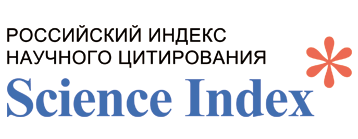STRUCTURE OF POLYTETRAFLUOROETHYLENE FILM AFFECTED BY ELECTRON RADIATION AND TEMPERATURES
DOI:
https://doi.org/10.51580/2024-4.2710-1185.46Keywords:
thermal conductivity, polytetrafluoroethylene, electron radiation, high temperature, phase transition, crystallization, crosslinking, pores, structureAbstract
Abstract. Introduction. The thermal conductivity of the polytetrafluoroethylene film in the
temperature range of 80–330 K and radiation doses from 5 to 30 kGy was investigated. Methodology.
Thermal conductivity studies were carried out at the TAU–5 thermophysical facility. Results. The
temperature dependence of the thermal conductivity of polytetrafluoroethylene at different irradiation
doses was obtained, and the resulting thermal conductivity curves demonstrate phase transitions at
temperatures T1 = 293 K and T2 = 303 K. The irradiation of polytetrafluoroethylene films with low doses
resulted in a shift of phase transition temperatures to the low temperature region, with a decrease in peak
amplitude. Irradiation with a dose of D = 30 kGy resulted in a 2 % decrease in thermal conductivity λ, a
significant decrease in the intensity of the phase transition peak at T1 and a complete disappearance of the
second peak at T2. As the temperature and irradiation dose increased, there was a notable rise in
interplanar distances, degree of crystallinity, and unit cell volume. Conversely, there was a reduction in
crystal size, a rearrangement of the crystal structure, and a smoothing of phase transitions. Conclusion. It
was determined that the thermal conductivity of the polymer at low temperatures is attributed to skeletal
vibrations of the main chain, while at high temperatures and irradiation doses, it can be attributed not only
to the rearrangement of the crystal structure, but also to the disappearance of pores and the ordering of the
crystalline phase of polytetrafluoroethylene.

















